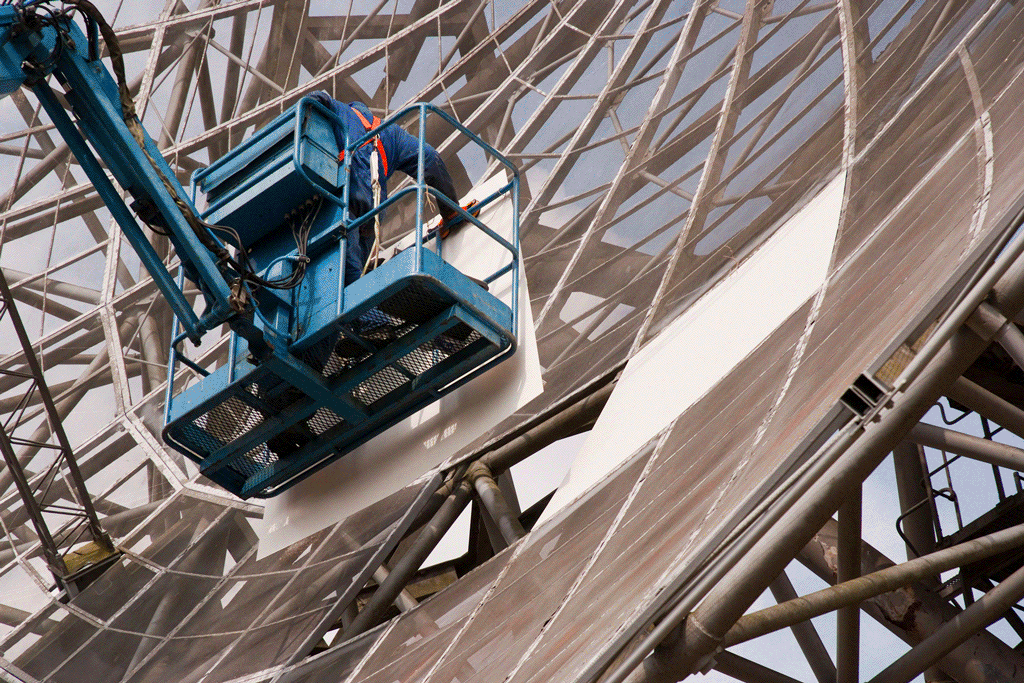Daily Image
05-11-2012TC-SKAR project succesfully closed
| Submitter: | R.H. van den Brink |
| Description: | Recently, the TC-SKAR (Thermoplastic Composite SKA Reflector) project was closed, after successful tests at the WSRT. It concerned the design and testing of a concept for a SKA antenna reflector, based on the use of novel thermoplastic composite material. The 2-year project was a collaboration between a Dutch Industrial project group, Chalmers University and ASTRON. The design is classical in its primary functions and approach, thereby decreasing design risks. The novelty is in the reflector structure, which is based on carbon reinforced thermoplastic material, which is not (yet) used for this kind of applications. It looks highly promising and feasible. The main technical input was by the Industrial Group, led by Airborne, a company with experience in building dish structures e.g. for ALMA. The entire group (Airborne, KvE, DTC, TUDelft) has experience with thermoplastic composites, from design to production. Chalmers University provided the integral radio design, and electro-magnetic calculations for the overall reflector, using the eleven feed as input. ASTRON provided the specifications, and performed system- and mechanical design and RF testing of materials. An integrated dish structure made from carbon reinforced thermoplastic material has several advantages over metal. The stiffness is much greater than steel, or even titanium-like metals. And combined with a very low coefficient of thermal expansion, it makes a structure that is not easily deformed by the heat of the Sun or by wind buffeting. The thermoplastic material also has advantages over more conventional thermoset materials, as it can be formed under high temperatures, and be welded together. This allows automated series production, which makes it more cost-competitive for large series. For performance analysis, the WSRT holographic measurement technique was used, with one run at 1420 MHz and one at 5 GHz. The 5GHz data show an improved reflectivity, which can be explained by the finer metal mesh in the composite material. |
| Copyright: | TC-SKAR consortium |
| Tweet |  |
